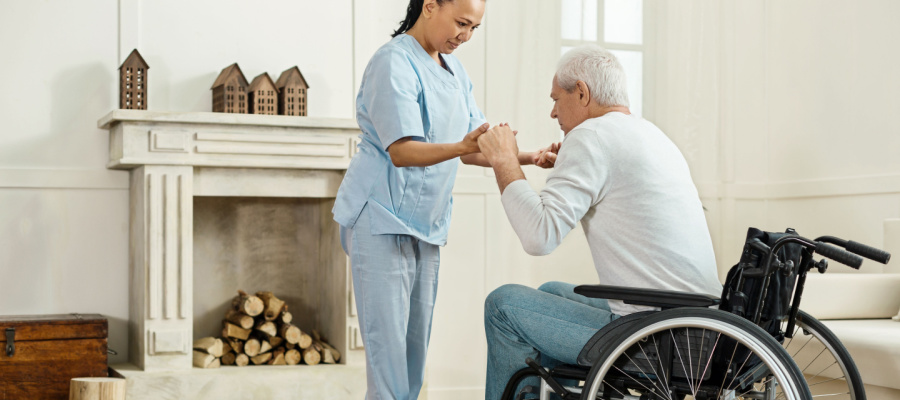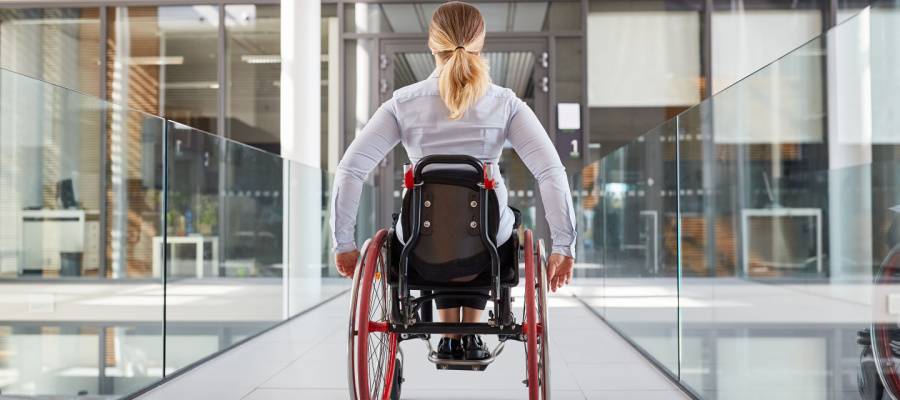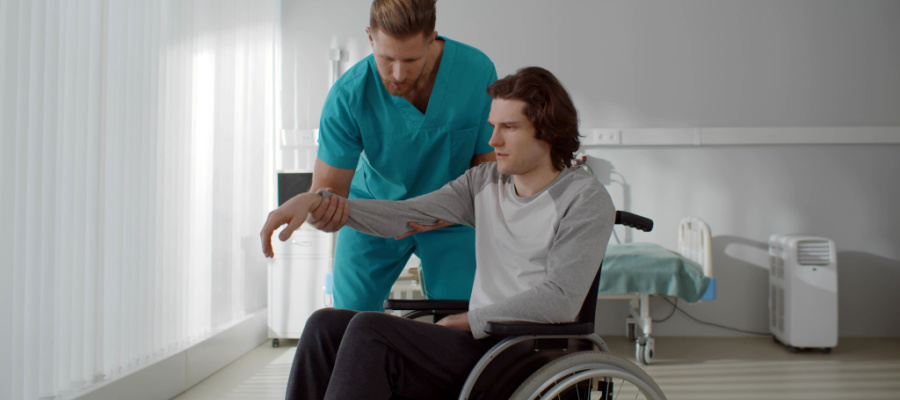How Do You Take Care of a Paralyzed Patient?
Caring for a paralyzed patient requires a holistic approach, addressing both their physical and emotional needs. Paralysis, whether caused by an accident, illness, or medical condition, can significantly impact a person’s mobility, independence, and overall quality of life. At Devoted Helpers, based in Sugar Land, Texas, we provide compassionate, professional care to individuals living with paralysis, helping them navigate daily challenges and achieve a higher quality of life.
In this article, we’ll explore essential aspects of caring for a paralyzed patient, from managing daily tasks and medical needs to offering emotional support.
Understand the Type and Severity of Paralysis
Before providing care, it’s important to understand the type of paralysis and its severity. Paralysis can occur from a variety of causes, including spinal cord injuries, strokes, neurological conditions like multiple sclerosis (MS), or brain injuries. The type and location of the paralysis will affect the level of care required.
- Complete Paralysis – When there is no movement or sensation below the level of injury (e.g., quadriplegia or paraplegia), the patient may require extensive assistance with daily activities such as transferring, bathing, and toileting.
- Incomplete Paralysis – Some patients may retain limited movement or sensation in certain body parts. These patients may be able to perform some activities independently but will still need help with others.
Knowing the extent of the paralysis will guide the level of care needed.
Assist with Mobility
One of the main challenges for a paralyzed patient is mobility. They may require assistance with transferring from bed to a wheelchair or moving from one location to another. These activities should be performed carefully to ensure the safety of both the patient and caregiver.
- Repositioning – To prevent pressure sores or bedsores, repositioning the patient regularly is crucial. If the patient is bedridden, they should be moved at least every two hours to relieve pressure on the skin and promote blood circulation.
- Transfers – Helping the patient move from a bed to a wheelchair, or from a wheelchair to other locations (such as the bathroom), requires proper lifting techniques. In some cases, mechanical lifts or transfer boards may be needed to safely move the patient.
- Mobility Aids – For patients with some limited movement, assistive devices like wheelchairs, walkers, or braces can help them regain some mobility. It’s important to ensure these devices are well-fitted and maintained.
Manage Hygiene and Personal Care
Daily hygiene and personal care are essential for a paralyzed patient, both for comfort and health. Depending on the extent of their paralysis, the patient may need help with bathing, dressing, and grooming.
- Bathing – Help the patient with bathing by providing assistance with washing, ensuring their comfort, and using appropriate support to prevent falls or injury. Some patients may use special shower chairs or bathing devices.
- Toileting – Depending on the level of paralysis, patients may need assistance with using the bathroom. Some may use catheters, while others may rely on incontinence pads. Establishing a regular schedule for toileting can reduce discomfort and the risk of infections.
- Skin Care – Paralyzed patients are at higher risk of developing pressure ulcers, especially if they remain in one position for long periods. Routine skin checks, proper hygiene, and the use of pressure-relieving devices (e.g., special mattresses or cushions) are essential for maintaining skin health.
Provide Medical Care and Medication Management
Paralyzed patients may have specific medical needs, including medication management, physical therapy, or treatments for other health conditions like spasticity, muscle weakness, or respiratory issues.
- Pain Management – Many patients experience chronic pain due to muscle spasms or nerve damage. Ensure the patient takes their prescribed pain medication on time and monitor for any adverse effects.
- Spasticity and Muscle Control – Spasticity (muscle stiffness and spasms) is common in individuals with spinal cord injuries or certain neurological conditions. Medications or physical therapy may be needed to manage these symptoms.
- Regular Health Monitoring – Keeping track of vital signs, including temperature, heart rate, and blood pressure, is important. Ensure the patient attends medical appointments for follow-ups with their doctor or therapist.
Support Emotional and Mental Well-being
Living with paralysis can be emotionally challenging. Many individuals face feelings of frustration, sadness, or isolation. Providing emotional support is a key component of caregiving.
- Encourage Communication – Allow the patient to express their emotions and feelings. Sometimes, just listening can provide immense comfort. Encourage open discussions about any challenges they may be experiencing.
- Promote Independence – Even if the patient requires assistance, it’s important to encourage them to do as much as possible independently. Allowing them to participate in decisions about their care and daily activities can help boost their confidence and self-esteem.
- Stay Socially Active – Isolation is a common issue for people living with paralysis. Help the patient maintain social connections by facilitating visits with family and friends, or even encouraging participation in support groups. Technology, such as video calls, can help maintain contact with loved ones.
- Mental Health Support – If the patient is experiencing depression, anxiety, or other emotional difficulties, consider seeking professional help from a counselor or therapist who specializes in working with patients with disabilities.
Maintain Nutrition and Hydration
Good nutrition is crucial for the health and well-being of a paralyzed patient. A balanced diet can help promote muscle health, maintain skin integrity, and boost overall immunity.
- Meal Preparation – Prepare nutrient-rich meals that are easy for the patient to consume. In some cases, patients may need assistance with feeding. Ensure that the meals are tailored to their dietary restrictions, such as low-sodium or low-sugar diets, if necessary.
- Hydration – Proper hydration is essential for preventing complications like urinary tract infections (UTIs) and constipation. Ensure the patient has access to water throughout the day and encourage them to drink regularly.
- Bowel and Bladder Health – Many paralyzed patients have issues with bowel and bladder control. Establishing a consistent schedule for catheterization or bowel management is important for preventing discomfort or infections.
Prevent Complications
Due to limited mobility and other health factors, paralyzed patients are at a higher risk of certain complications. Proactive care can help prevent these issues.
- Pressure Sores (Bedsores) – Regular repositioning and the use of pressure-relieving devices (e.g., special mattresses, cushions) can prevent pressure ulcers, which are common in immobile patients.
- Respiratory Issues – Some patients may experience difficulty breathing, particularly if the paralysis affects the chest or diaphragm muscles. Encourage deep breathing exercises and assist with chest physiotherapy as needed.
- Urinary and Bowel Infections – Catheter care, regular toileting routines, and hygiene practices can help reduce the risk of urinary tract infections and bowel-related issues.
Consider Professional Home Care Services
Caring for a paralyzed patient can be physically and emotionally demanding. If family members or caregivers need additional support, professional caregivers can assist with medical and non-medical tasks. Devoted Helpers, based in Sugar Land, Texas, specializes in providing in-home care services, ensuring that individuals with paralysis receive the highest level of care and attention.
Our skilled caregivers can assist with everything from mobility and personal hygiene to medication management and emotional support, allowing your loved one to live with dignity and comfort in the familiar surroundings of home.


